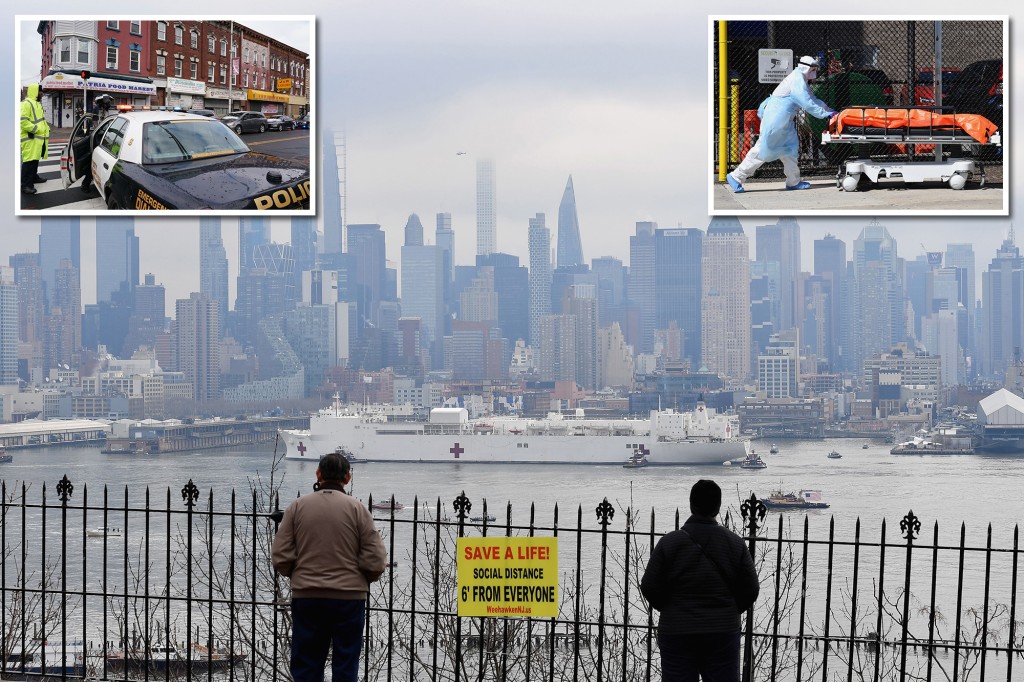Droves of residents fled Democrat-run states with surging crime and COVID-19 restrictions last year — with New York, New Jersey and Connecticut among the five that suffered the steepest losses, a sobering new survey shows.
New Jersey led the nation with 70 percent of the people involved in moves fleeing the Garden State, compared to just 30 percent who migrated in, according to United Van Lines’ 45th Annual National Movers Study.
Illinois — home to crime- and shooting-ridden Chicago — came in second with 67 percent of the moves recorded were of residents leaving the state, while just 27 percent were in-bound.
New York ranked third, with 63 percent of movers headed for the exits and 37 percent settling in.
Nearly 30 percent those who fled the Empire State said “family” was a primary factor in their decisions, with about 12 percent citing “cost.”

The survey also showed that the exodus largely involved the wealthy, with those making $150,000 or more comprising 45.3 percent of the total.
It’s unclear when those moves took place, but in April the state adopted a record $212 billion budget that targeted big earners with new taxes that rise as high as 10.9 percent.
Meanwhile, six of the top 10 metro areas suffering from the worst exodus were in the New York-New Jersey region.
Nearly 80 percent of the moves in Long Island’s Nassau-Suffolk counties were exiters — the highest outbound rate of any region in the country.
About 75 percent fled Binghamton and 73 percent exited Poughkeepsie/Dutchess County. Three New Jersey areas — Bergen-Passaic, Newark and Middllesex-Somerset-Hunterdon also had among the worst outbound rates.
Neighboring Connecticut didn’t fare much better — 60 percent of the moves recorded were outbound and 40 percent inbound.

For the entire Northeast, 60 percent of the moves were outbound.
The results from 2021 mirrored United Van Lines’ 2020 findings, when the COVID-19 pandemic first ravaged the NY-NJ metro region and later the entire country.
“The study also revealed that the COVID-19 pandemic continued to accelerate many decisions to move, indicating that Americans were on the move to lower-density areas and to be closer to their families throughout last year,” United Van Lines said in a release.
And sunny California is no longer the Golden State — with more people leaving than “California Dreamin’.”
California — long a driver of population growth — was fifth-worst for movers heading for the exits, with 59 percent fleeing the state while only 41 percent of newcomers moved in.
All five states with the highest outbound rates have a few things in common: they are run by Democrats, are high-taxed and suffer from spikes in crime.

Less populous Vermont, represented by democratic socialist Senator and former presidential candidate Bernie Sanders, broke the mold. It had the highest in-bound migration in the U.S., with 74 percent of the moves reported were of those coming into the state.
The other top in-bound states were South Dakota (69 percent), South Carolina (63 percent), West Virginia (63 percent) and Florida (62 percent).
In addition to the state-by-state data, United Van Lines also conducts an accompanying survey to examine the motivations and influences for Americans’ interstate moves.
This analysis found that about one-third of Americans who moved did so in order to be closer to family – a new trend coming out of the pandemic as priorities and lifestyle choices shifted.

Another 33 percent of Americans moved for a new job or job transfer, a significant drop from 2015, when more than 60 percent of Americans cited a job or transfer.
“This new data from United Van Lines is indicative of COVID-19’s impact on domestic migration patterns, with 2021 bringing an acceleration of moves to smaller, mid-sized towns and cities,” Michael Stoll, economist and professor at the University of California at Los Angeles.
“We’re seeing this not only occur because of Americans’ desire to leave high density areas due to risk of infection, but also due to the transformation of how we’re able to work, with more flexibility to work remotely,” he said.
The survey found that retirees are moving to less populated areas of warm, sunny states such as Florida.
Instead of Orlando and Miami, they’re flocking to less dense places such as Punta Gorda (81 percent inbound), Sarasota (79 percent inbound) and Fort Myers-Cape Coral (77 percent inbound).
Six of every 10 residents moving out of the Empire State were ages 55 and over.
